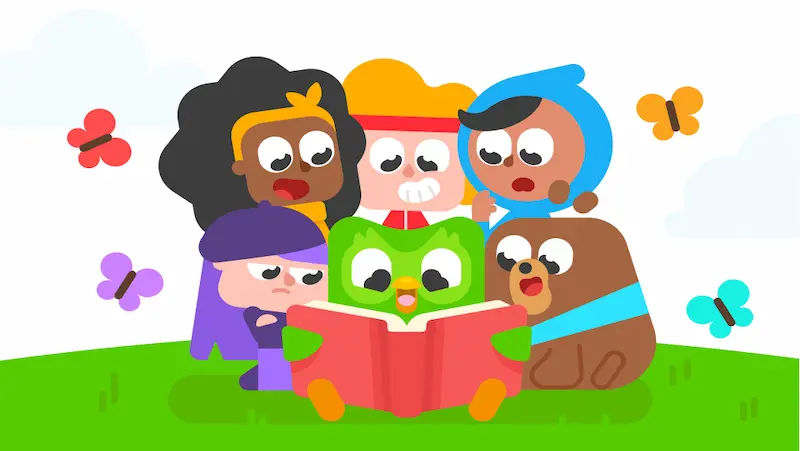Learning can be a lot of fun, especially when it comes to discovering interesting and educational facts. Children have an innate curiosity, and feeding their thirst for knowledge with fascinating facts is an excellent way to engage and educate them

Table of contents
Introduction
Fun facts are nuggets of information that captivate children’s imaginations and make learning enjoyable. They provide a unique opportunity for kids to expand their knowledge while having fun. Whether it’s about animals, history, science, or any other subject, fun facts spark curiosity and encourage children to explore the world around them. In this essay, we will explore the importance of fun facts for kids and how they contribute to their overall development. Exploring fun facts for kids makes learning an exciting adventure, sparking curiosity and smiles along the way.
Why Fun Facts are Important for Kids
Fun facts are a great way to keep kids engaged and learning. They can also be beneficial for their cognitive development. Here are some of the benefits of learning fun facts for kids:
- Improved memory. Learning fun facts helps kids to improve their memory. When they are exposed to new information, their brains have to work to store it and retrieve it later. This helps to strengthen their memory skills.
- Enhanced critical thinking skills. Fun facts can also help kids to develop their critical thinking skills. When they are presented with new information, they have to think about it and figure out how it fits into what they already know. This helps them to develop their problem-solving skills and learn to think more critically about the world around them.
- Broadened general knowledge. Learning fun facts can help kids to broaden their general knowledge. This can be beneficial in many ways. For example, it can help them to do better in school, make more informed decisions, and have more interesting conversations.
- Increased creativity. Fun facts can also help kids to increase their creativity. When they are exposed to new information, their brains are more likely to come up with new ideas. This can help them to be more creative in their thinking and problem-solving.
- Improved mood. Learning fun facts can also help to improve kids’ mood. When they are learning something new, their brains release dopamine, a neurotransmitter that is associated with pleasure. This can help to make them feel happier and more motivated.
There are many different ways to teach kids fun facts. You can find books, websites, and apps that are full of interesting information. You can also create your own fun facts by looking up interesting things in the news or by reading about different topics.
Engage young minds with a captivating word search for kids, combining educational fun with intriguing fun facts for an enriching experience.
No matter how you choose to teach them, fun facts are a great way to keep kids engaged and learning. They can also be beneficial for their cognitive development. So why not start sharing some fun facts with the kids in your life today?
Here are some additional benefits of learning fun facts for kids:
- Increased curiosity. Learning fun facts can help kids to become more curious about the world around them. This can lead to them asking more questions and seeking out more information.
- Improved communication skills. When kids learn fun facts, they have something to talk about with others. This can help them to improve their communication skills and make new friends.
- Enhanced problem-solving skills. Fun facts can help kids to develop their problem-solving skills. When they are presented with a problem, they can use the information they have learned to come up with a solution.
- Reduced stress levels. Learning fun facts can help kids to reduce their stress levels. When they are focused on learning something new, they are less likely to think about the things that are causing them stress.
Overall, learning fun facts is a great way for kids to learn and grow. It is a fun and engaging way to introduce them to new information and help them to develop their cognitive skills. So next time you are looking for a way to keep your kids entertained, why not try sharing some fun facts with them?

Science Facts for Kids
Here are some interesting and educational science facts for kids
Human Body
- The human body is made up of trillions of cells. Each cell has a specific job to do, such as carrying oxygen, fighting infection, or digesting food.
- The brain is the most complex organ in the body. It contains billions of nerve cells that work together to control everything we do, from thinking to moving to feeling emotions.
- The heart is a muscle that pumps blood throughout the body. It beats about 100,000 times per day, and it will beat about 3 billion times in a lifetime.
- The lungs are responsible for breathing. They take in oxygen from the air and remove carbon dioxide from the body.
- The stomach is a muscular organ that helps to digest food. It churns and mixes food with stomach acid, breaking it down into smaller pieces that can be absorbed by the body.
- The small intestine is a long, coiled tube that absorbs nutrients from food. It is about 20 feet long in adults.
- The large intestine is a shorter, wider tube that absorbs water from food. It is about 5 feet long in adults.
- The skin is the largest organ in the body. It protects the body from the environment and helps to regulate body temperature.
- The eyes are the organs of sight. They allow us to see by detecting light.
- The ears are the organs of hearing. They allow us to hear by detecting sound waves.
- The nose is the organ of smell. It allows us to detect smells by detecting molecules in the air.
- The tongue is the organ of taste. It allows us to taste food by detecting molecules in food.
Space
- The Earth is the third planet from the Sun. It is the only planet known to support life.
- The Sun is a star. It is a giant ball of hot gas that provides light and heat to the Earth.
- The Moon is a natural satellite of the Earth. It is the fifth largest moon in the solar system.
- The solar system is a collection of eight planets, their moons, and other objects that orbit the Sun.
- The Milky Way is a galaxy. It is a spiral galaxy that contains about 100 billion stars.
- The universe is everything that exists. It is estimated to be about 13.8 billion years old.
Environment
- The environment is everything that surrounds us. It includes the air, water, land, and all living things.
- Pollution is the introduction of harmful substances into the environment. It can come from a variety of sources, such as factories, cars, and power plants.
- Climate change is a long-term change in the Earth’s climate. It is caused by a variety of factors, including human activities and natural processes.
- Conservation is the protection of natural resources. It is important to conserve the environment so that future generations can enjoy its benefits.
These are just a few of the many interesting and educational science facts for kids. There is so much to learn about the world around us, and science is a great way to explore it.
Animal Facts for Kids

Here are some fascinating animal facts for kids:
- The blue whale is the largest animal on Earth. It can grow up to 100 feet long and weigh up to 200 tons!
- The cheetah is the fastest land animal. It can reach speeds of up to 75 miles per hour!
- The chameleon can change its color to blend in with its surroundings. It does this by using special cells in its skin that can reflect light in different ways.
- The octopus has three hearts. One heart pumps blood to its gills, one heart pumps blood to its body, and one heart pumps blood to its ink sac.
- The sea turtle can hold its breath for up to two hours. This allows it to dive deep underwater to find food.
- The elephant can communicate with each other over long distances. They do this by using infrasound, which is sound that humans cannot hear.
- The albatross can fly for up to 10 days without landing. It does this by using the wind currents to help it stay in the air.
- The honey bee has five eyes. Two of its eyes are compound eyes, which are made up of many smaller eyes. The other three eyes are simple eyes, which can only see in black and white.
- The giraffe has the longest tongue of any animal. It can reach up to 20 inches long!
- The platypus is a mammal that lays eggs. It is also the only mammal that has a venomous spur on its back foot.
These are just a few of the many fascinating facts about animals. There are so many amazing creatures in the world, and it is always fun to learn more about them.
In addition to these fascinating facts, here are some additional information about animal behavior, habitat, and adaptations:
- Behavior: Animals exhibit a wide range of behaviors, from the simple to the complex. Some animals, such as insects, are very simple and have only a few basic behaviors. Other animals, such as mammals, are more complex and have a wide range of behaviors. Animal behavior is influenced by a number of factors, including genetics, environment, and learning.
- Habitat: Animals live in a variety of habitats, including forests, grasslands, deserts, oceans, and even the human environment. The habitat that an animal lives in influences its behavior, diet, and physical adaptations.
- Adaptations: Animals have evolved a wide range of adaptations to help them survive in their environment. These adaptations can include physical features, such as fur or feathers, or behavioral adaptations, such as migration or camouflage.
History Facts for Kids

Here are some fun and educational facts about historical events, figures, and cultures for kids:
- The first recorded Olympic Games were held in 776 BC in Olympia, Greece.
- The Great Wall of China is the longest man-made structure in the world, stretching over 13,000 miles.
- The Titanic was the largest ship in the world when it sank in 1912, killing over 1,500 people.
- The Wright brothers made the first successful flight in a powered airplane in 1903.
- The first atomic bomb was dropped on Hiroshima, Japan, in 1945.
- The first man on the moon was Neil Armstrong, who landed there in 1969.
- The first woman in space was Valentina Tereshkova, who flew in 1963.
- The first black president of the United States was Barack Obama, who was elected in 2008.
These are just a few of the many interesting and important historical facts that kids can learn about. By learning about history, kids can gain a better understanding of the world around them and the people who have shaped it.
Here are some more specific facts about historical figures and cultures:
- Leonardo da Vinci was a famous Italian painter, sculptor, architect, and engineer who lived from 1452 to 1519. He is best known for his paintings, including the Mona Lisa and The Last Supper, but he was also a brilliant inventor and engineer.
- Marie Curie was a Polish physicist and chemist who lived from 1867 to 1934. She is best known for her work on radioactivity, and she was the first woman to win a Nobel Prize.
- Martin Luther King Jr. was an American civil rights leader who lived from 1929 to 1968. He is best known for his role in the American civil rights movement, and he is remembered for his famous “I Have a Dream” speech.
- The Mayans were an ancient Mesoamerican civilization that flourished from about 2000 BC to 1500 AD. They were known for their advanced architecture, writing system, and mathematics.
- The Aztecs were an ancient Mesoamerican civilization that flourished from about 1300 AD to 1521 AD. They were known for their powerful warriors, their elaborate religious rituals, and their beautiful artwork.
These are just a few of the many interesting and important historical figures and cultures that kids can learn about. By learning about history, kids can gain a better understanding of the world around them and the people who have shaped it.
Nature Facts for Kids
Here are some interesting nature facts for kids:
Plants
- The largest plant on Earth is a fungus in Oregon that covers 2,200 acres.
- The tallest tree on Earth is a coast redwood in California that is over 379 feet tall.
- The fastest growing plant on Earth is a bamboo that can grow up to 39 inches in a single day.
- The oldest living thing on Earth is a bristlecone pine tree in California that is over 5,000 years old.

Weather
- The highest recorded temperature on Earth was 134 degrees Fahrenheit in Death Valley, California.
- The lowest recorded temperature on Earth was -128 degrees Fahrenheit in Vostok, Antarctica.
- The most rainfall in a single year was 1,828 inches in Cherrapunji, India.
- The most snowfall in a single year was 36 feet in Silver Lake, Colorado.
Geography
- The deepest point on Earth is the Mariana Trench in the Pacific Ocean, which is over 36,000 feet deep.
- The highest mountain on Earth is Mount Everest, which is over 29,000 feet tall.
- The largest desert on Earth is the Sahara Desert, which covers over 3.6 million square miles.
- The largest rainforest on Earth is the Amazon rainforest, which covers over 2 million square miles.
These are just a few of the many interesting facts about nature. There is so much to learn about the natural world, and it is always fascinating to explore. So get out there and explore nature! You never know what you might discover.
Here are some additional activities that kids can do to learn more about nature:
- Go on a nature walk and look for different plants and animals.
- Collect leaves, rocks, and other natural objects.
- Make a birdhouse or butterfly feeder.
- Plant a garden.
- Read books about nature.
- Watch nature documentaries.
- Visit a zoo or aquarium.
There are many ways for kids to learn about nature. By getting outside and exploring, they can learn about the plants, animals, and ecosystems that make up our world.
Click here to continue coding apps for kids.
Also, Fun games for kids are a great way to keep them entertained and active during playtime.
Conclusion
In conclusion, fun facts are a fantastic way to engage children in learning and expand their knowledge. These interesting and educational tidbits provide a break from traditional learning methods and offer a refreshing way to explore the world around them. By discovering fascinating facts, children not only gain valuable information but also develop critical thinking skills and a curiosity for further exploration.
Whether it’s about animals, history, science, or the wonders of the universe, fun facts for kids ignite their imagination, encourage a love for learning, and help them see the world as a place full of endless possibilities. So, let’s embrace the power of fun facts and inspire our young learners to embark on exciting educational journeys that will last a lifetime.
With a focus on creating engaging and interactive content, BrightChamps aims to ignite a genuine enthusiasm for learning within young minds. Through a diverse range of educational materials, including articles, videos, games, and activities, BrightChamps seeks to foster a lifelong love for exploration and knowledge.
BrightChamps teaches a variety of programs that assist children in developing a foundation in computer programming through coding for kids, activities, interactive lessons, and other means.
BrightChamps’ blog page is a treasure trove of valuable resources that empowers children for a brighter future through innovative education and more.
Frequently Asked Questions
Sloths move so slowly that algae can grow on their fur.
Cows have best friends and can become stressed when separated.
Dolphins are known to give themselves names by developing unique whistles.
Honeybees communicate by dancing to tell others where to find food.
Penguins propose to their mates with a pebble.
Here’s a fun and educational science fact for kids: Did you know that lightning is actually hotter than the surface of the sun? It can reach temperatures of around 30,000 Kelvin, while the surface of the sun is about 5,500 Kelvin.
Leonardo da Vinci could write with one hand and draw with the other at the same time.
The Great Wall of China is so long that it could circle the Earth’s equator.
Ancient Egyptians used to worship cats and believed they brought good luck.
Kids might enjoy learning that the human body has over 600 muscles, the strongest muscle is the tongue, and our taste buds change every two weeks. Additionally, our brain generates enough electricity to power a small light bulb.
You can find more fun facts for kids on websites like National Geographic Kids, Funology, and Science Kids. There are also many books available, such as “Weird But True!” by National Geographic Kids, that provide interesting facts for children.


 We are an army of educators and passionate learners from BrightChamps family, committed to providing free learning resources to kids, parents & students.
We are an army of educators and passionate learners from BrightChamps family, committed to providing free learning resources to kids, parents & students.














